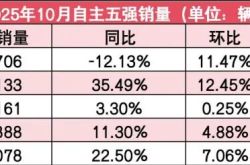Embodied AI: The Big Players Are Always On the Scene
![]() 09/01 2025
09/01 2025
![]() 537
537
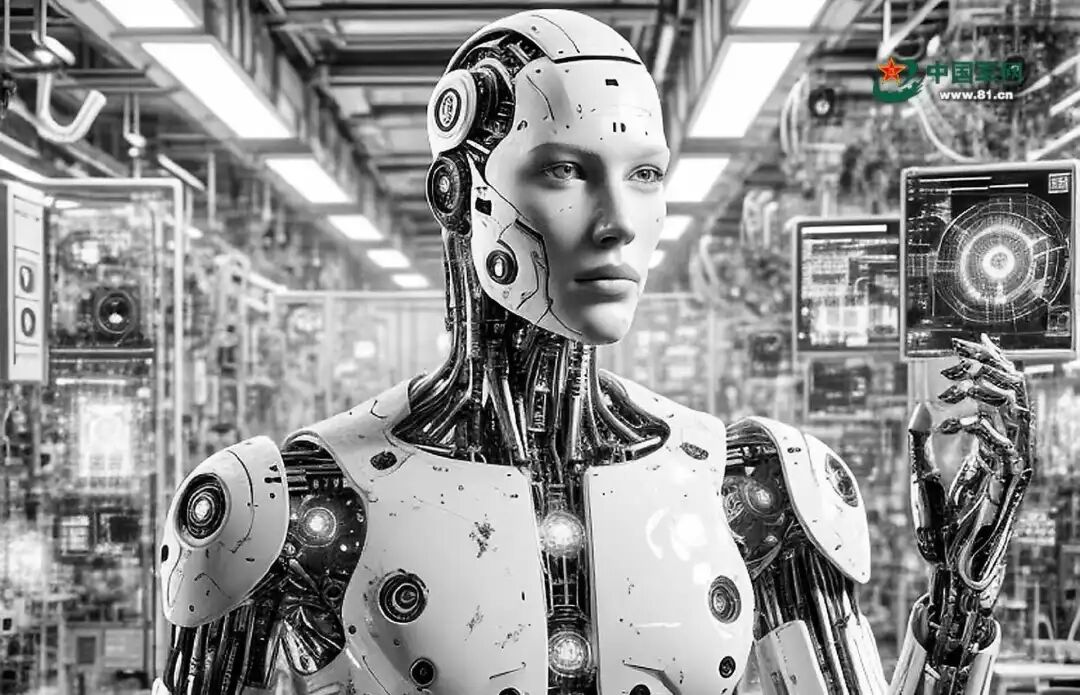
Author | Lin Feixue
Editor | He Kun
Operation | Chen Jiahui
Produced by | LingTai LT (ID: LingTai_LT)
Cover Image | AI-generated Image
Bubble Bursts, Big Players Enter
Few new technology tracks are as "fully loaded" as embodied AI. Players are flocking in, and platforms for "brain building" and "body building" are emerging one after another. The scene looks prosperous, yet anxiety lurks beneath. Is this a long-term capability competition or merely another concept relay race?
On August 4, China High-tech Industries Herald interviewed multiple experts to delve into the investment dynamics and bubble phenomenon within the embodied AI field.
Li Junlan, Research Manager of IDC China, believes that "there is indeed a certain structural 'bubble' in the embodied AI field at present. Some projects may receive high valuations even when the products are not yet mature and application verification is limited, but the overall situation is still in a reasonable expansion stage, driven by technological advancements."
Additionally, Lu Jiaqing, Senior Partner of Guoke Capital, Kang Lidong, Managing Director of Wanchuang Investment Bank, and others also expressed in the interview that there is a certain bubble in embodied AI at present.
When major players coincidentally set up platforms, complete tool chains, establish closed-loop data systems, and build cooperation ecosystems, they are essentially raising industry thresholds, squeezing speculative space, and creating more fertile ground for vertical players who can truly deliver results.
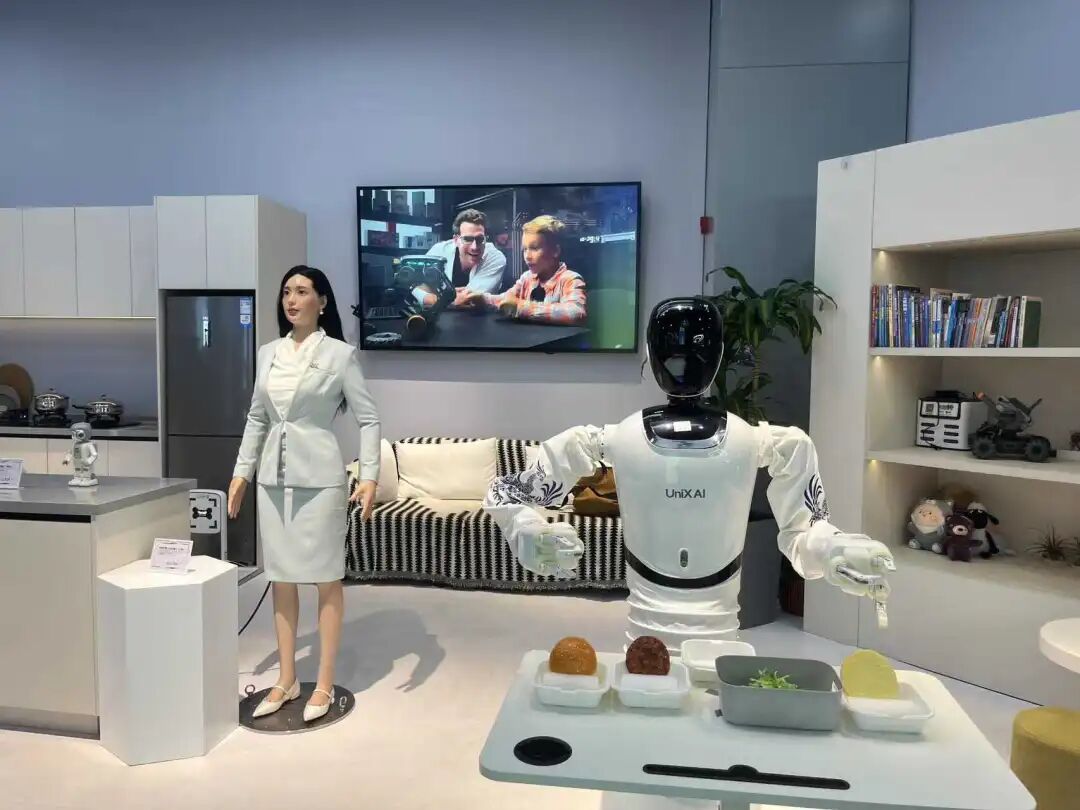
Yuan Fuyu, Vice President of Baidu Group, stated in a speech on July 26 that based on the common needs of the industry and the challenges faced in implementation, Baidu Intelligent Cloud focuses on four key areas: embodied brain, operational cerebellum, embodied dataset construction, and whole-machine ontology research and development, to assist enterprises in embodied AI key technology and product research and development.
Comprehensive information from Tianyancha media indicates that the enthusiasm for embodied AI has long surpassed model demonstrations at press conferences and has entered a stage that truly tests implementation capabilities, system capabilities, and organizational capabilities. A standardized, platform-based, and reusable embodied AI technology base is the key lever to suppress bubbles such as redundant reinvention and performance chasing, guiding capital and talent towards effective innovation.
As Li Junlan asserts in her research "Embodied AI 'Breaks the Circle' + Rise of Chinese Power: Robot Competition Enters 'China Time'", China has become a significant force in the global robot market, possessing the industrial chain, technology, and application foundation to move towards the next stage of embodied intelligent robots, exhibiting an overall vigorous development trend.
In her view, to become the eventual leading embodied intelligent robot enterprise, it is not necessary to possess the most cutting-edge technology. What is more crucial is to intersect or coincide with technological trends and achieve successful commercial applications in the process. Only in this way can enterprises possess sustained competitiveness and ultimately grow into industry leaders.
From this perspective, internet giants such as Baidu, Tencent, and Alibaba Ant Group have coincidentally shifted their focus to the underlying infrastructure and core aspects of embodied AI, no longer limited to comparing the size and speed of models, but rather investing and developing differentiated efforts around who can utilize them and who can implement closed loops.
'Brain Building' Means Always Being Present
The essence of this "brain building" competition is not that major players personally get involved in building robots, but rather empowering the entire industry chain with reusable and deliverable underlying capabilities released after squeezing out industry bubbles.
Comprehensive data from Tianyancha and IDC research indicate that "Chinese manufacturers are accelerating the construction of a complete industrial chain for embodied intelligent robots, taking the lead in implementing applications across multiple industry scenarios and driving technology from validation towards large-scale deployment. Diverse participants are jointly creating an open ecosystem, accelerating the emergence of embodied intelligent robots from laboratories into actual production and living scenarios."
From merely calculating to truly being capable, it has completed a role switch. The key point is straightforward: move large models from "cloud advisors" into the machine body to create "portable brains." Perception, cognition, decision-making, and execution are integrated into a single chain, with virtual and real worlds operating simultaneously, capable of both thinking and acting.
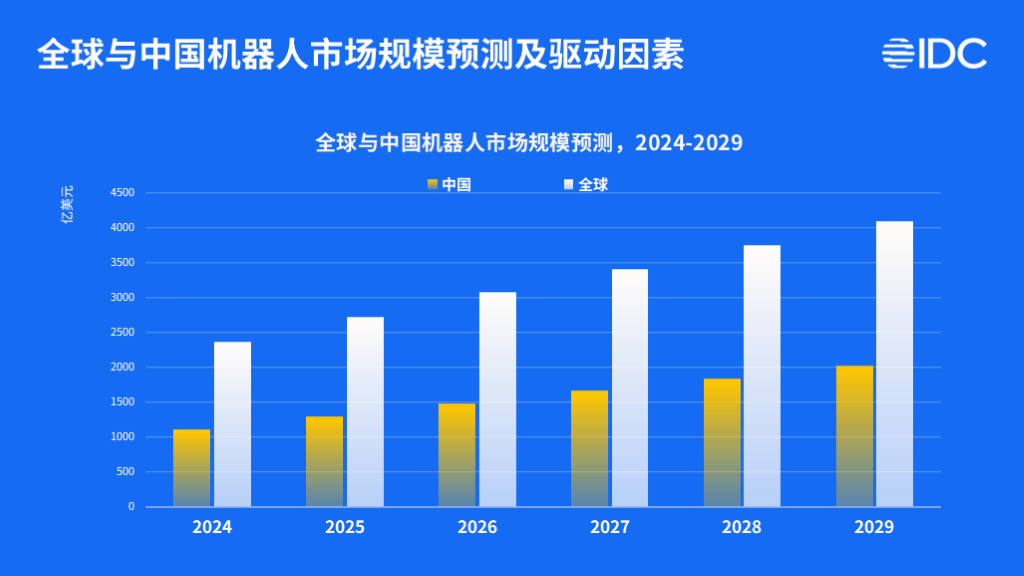
▲Image Source: IDC
IDC predicts that the global robot market will exceed $400 billion by 2029. Among them, the Chinese market accounts for nearly half of the share and ranks globally with a compound annual growth rate of nearly 15%, becoming a core engine driving global robot industry growth.
However, driving this leap forward is not just the robot industry but also the full-chain collaboration of embodied AI, with algorithms, data, computing power, hardware, and application scenarios advancing together. Only when this chain exerts force simultaneously can technology truly reach a new level. "Embodied intelligent robots are an important direction for the intelligent development of robots, and their realization relies on the integration of multiple key technologies and complex systems to meet the needs of diverse and complex application scenarios," IDC research points out.
Today's embodied intelligent robots are no longer the "tomorrow" of laboratories. The so-called versatility is not just about talking semantics; it requires being able to get started on-site.
Yuan Fuyu disclosed in her speech that in terms of scenario applications, Baidu Intelligent Cloud has accumulated experience in the implementation and replication of artificial intelligence across thousands of industries, including education, scientific research, healthcare and wellness, manufacturing, logistics, energy, commerce, bioscience, and more, through years of practice.
Making this happen is not simple. Each link needs to be scrutinized, from how to build the system, how to obtain data, how to allocate computing power, how to run simulations, how to test real machines, and finally how to deliver in bulk. In essence, it tests the organizational capabilities of undertaking large-scale projects.
On July 27, Shanghai Securities News reported that on the same day, Tencent Robotics X Lab and Foton Lab jointly released the embodied AI open platform Tairos "Titanium Screw," which is China's first embodied AI software platform that provides large models, development tools, and data services in a modular manner, opening up to the robot industry through plug-and-play methods.
Zhang Zhengyou, Chief Scientist of Tencent, Director of Robotics X Lab, and Director of Foton Lab, stated that the Tairos embodied AI platform is dedicated to supplementing key software capabilities for robot ontologies and application developers, akin to installing "brains" for various types of robots.
In fact, embodied AI is not just a stage for major players. Startups, solution providers, open-source communities, research institutions, and system integrators are all supplementing the chain. Whoever refines the chain links and stabilizes deliveries will have more say.
Of course, the threshold is also high. This is not the old path of light applications and rapid expansion. It is about multi-terminal integration. It is necessary to not only handle the computing power and algorithms of large models but also install capabilities into various hardware and adjust them repeatedly in real scenarios to be usable, user-friendly, and stable.
The Real World Is the Ultimate Examination Room
Zooming out further, this "brain building" competition is not about which robot stands out but rather the entry point for the next generation of platform dividends. After PCs came mobile, and after mobile came the cloud. Now, it is the operating system that embodied AI cannot do without.
It is not easy to understand speech, and it is even more difficult to understand and deal with the real world. In the end, those who make it to the second half may not be the ones with the loudest voices but rather those who align the brain, body, and scenarios, connect the entire chain, and can achieve long-term reuse and stable delivery.
In terms of specific routes for "brain building," major players have demonstrated different strategic focuses. From Baidu's VLA adaptation to Tencent's Tairos platform, they attempt to find connection points between technology generalization and the developer ecosystem – not competing with single products but rather leveraging an entire technology stack to connect model training, validation, inference, and deployment, providing a capability base for the entire industry.
In this way, cloud computing is not just a provider of computing power but also the "scheduling hub" for model capabilities, determining who can transition from algorithm implementation to commercial transformation the fastest.
In terms of embodied brain model research and development, relying on Baidu's Baige GPU cloud platform, Baidu Intelligent Cloud is the first cloud vendor to fully adapt to the three mainstream open-source embodied VLA models: RDT, π0, and GR00TN1.5, assisting enterprise algorithm engineers in quickly exploring the VLA technology route.
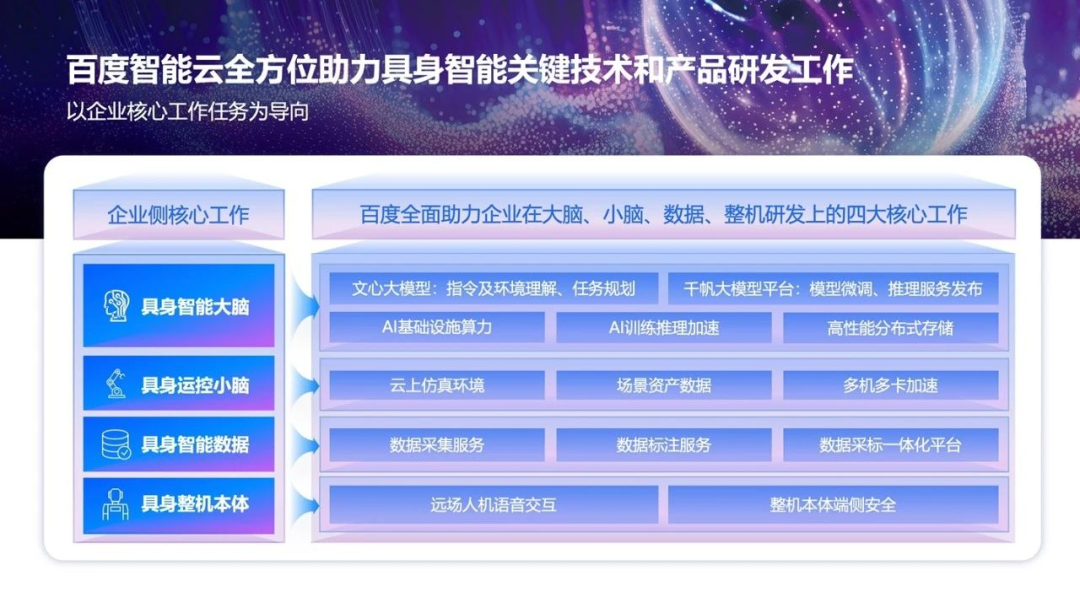
▲Image Source: Baidu Intelligent Cloud
In a message from Tencent Robotics X Lab on August 1, it was stated that Tairos is based on the technical capabilities accumulated by Tencent Robotics X and Foton Lab over the years in the field of robots, extensively combining industrial end demands.
This includes planning large models, multimodal perception models, and joint perception-action large models, and provides services externally through standardized interface calls and software development kits (SDKs), facilitating developers to access embodied AI models at lower costs.
Additionally, the platform supports one-click launching of simulation environments in the cloud for planning and perception model validation, with multiple preset robots, scenarios, and tasks, allowing more developers to quickly verify and understand model capabilities.
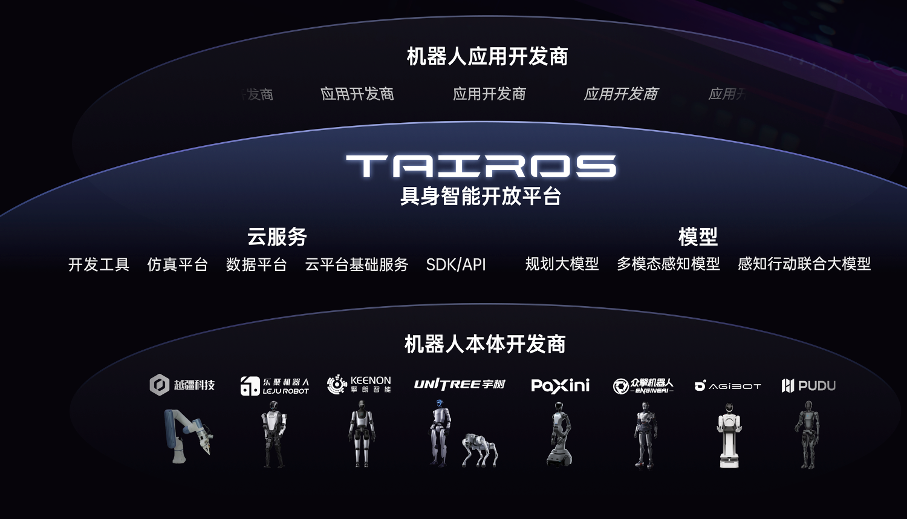
▲Image Source: Tencent Robotics X Lab
Compared to the strategies of Baidu and Tencent, an article in China Fund News on March 11 stated that "Lingbo Technology is an embodied AI subsidiary of Ant Group, dedicated to focusing on the service sector and creating industry-leading robot products, making robots enter life and become everyone's good helper." As an embodied AI company within the Alibaba ecosystem, if the capabilities of Alibaba's Tongyi large model are integrated, there may be even greater implementation power.
The competition among platforms is essentially a competition of closed-loop speed, scenario migration capabilities, and developer penetration. This is not just a tool battle for large models but also a game about who can define the next generation of operating systems.
Ultimately, the reason why major players can rise to the top after the bubble bursts is not because they tell the most enchanting stories but rather because they possess the systematic ability to deepen technology and ecology.
The essence of this ability is the willingness to not rush to outperform others but rather to take root in the industry and polish every seemingly insignificant chain link to "run the long course."
Written at the End
The direction of embodied AI is no longer the familiar model observed from the outside. What is seen externally is only the increase in project numbers and capital flows, but it is difficult to touch the adjustments that are occurring in depth.
As more forces interact and constantly correct behind the scenes, the original methods of competition are being rewritten. The next process may not extend along the current hustle and bustle but rather embark on a longer and narrower path, using time to sift through the forces that can leave a lasting impact.
Which players will make it to the end? Which will slow down at critical junctures? When the hustle and bustle fade, there are no clear standard answers or inevitable winners. But it is certain that those who can stay to the end will be the enterprises that truly bring it into reality through sustained investment and patient accumulation.



